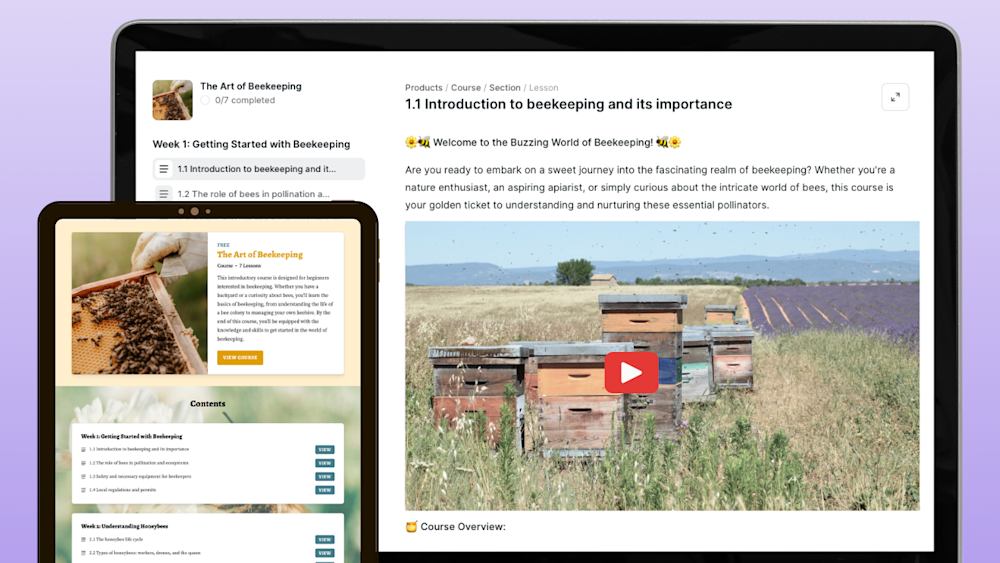You want your students to get as much out of your online course as possible. In fact, you hope they’ll finish the course completely.
But the reality is often different. Life gets in the way, and students can forget to complete the course. This can be disheartening after all the time and energy you’ve spent building it.
So here’s a guide to keeping your cohort motivated until the end.
In this article, we’ll discuss ways to chart your students’ progress and various engagement techniques for your online courses.
But first, here’s why you should offer course certificates to encourage your students to finish.
Create a course certificate
Your students knew what they’d learn on your course, but sometimes they need an extra push to complete it.
A course certificate is a one-page document a student receives once they’ve finished their course.
Course certificates are a powerful incentive for students to conclude their courses. Their power is such that when they’ve been removed from courses, completion rates dropped by 50%.
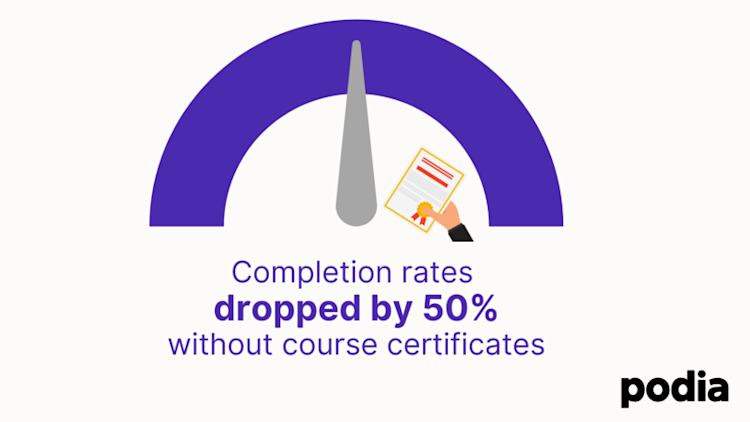
Why is it so effective? Essentially, having a certificate gamifies the learning experience.
Gamification is the concept of adding game elements to encourage engagement. Rewards like certificates are a part of that approach. Think of them as the shiny trophy you can win at the end of a video game.
Gamification has a ton of benefits. It increases student engagement by 89%, helps them retain information, and motivates them to learn.
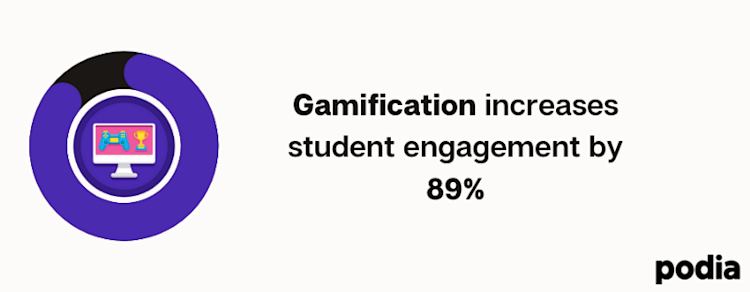
So if you want to know how to make online courses engaging, start by adding course certificates.
Engaged students are not only more likely to finish your course, but they’ll also help you get better reviews to attract more students. 72% of people say positive reviews and testimonials from other buyers lift their trust in a business.
Watch our video below to discover how to build certificates in Podia, or keep scrolling to read a step-by-step guide.
Here’s how you can set up course certificates from your Podia dashboard.
Navigate to the Products tab in the top bar and select the course you’d like to offer a certificate for. Next, click “Details,” and you’ll find certificates in the second section (under “Options”).
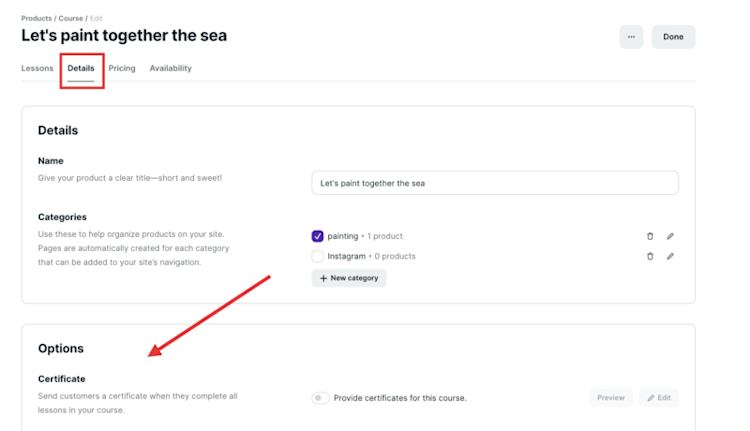
Turn the “Provide certificates for this course” button on, then click “Edit”.

Personalize your certificate with your logo, certificate title, and more. You can also choose whether to give your certificate a unique serial number and a completion date.
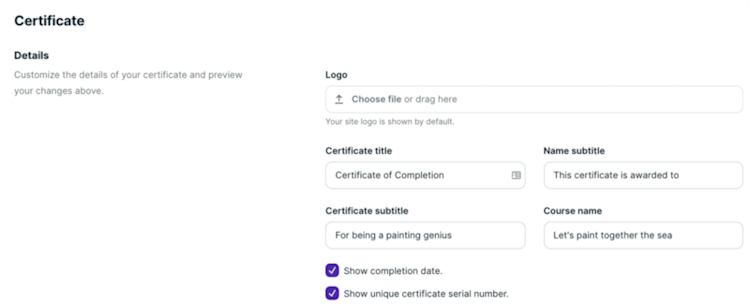
Click “Save” and return to the options section. You can now preview your certificate.

Here is how it looks after my edits.
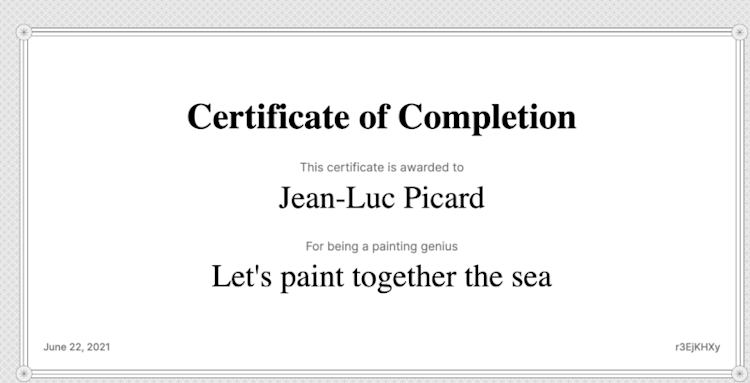
And that’s it. Your course certificates are now ready to go and work their magic on your students.
There’s one more step here that you shouldn’t skip: tell your students that these certificates are available.
Here’s an email template for contacting them. Copy and paste it into your email marketing platforms, and you’re good to go.

That email could prompt your students to dive back into your course.
Bottom line:
Course certificates are a powerful tool to motivate your students to finish their courses. This is especially true for students close to the finish line, as it’s hard to resist completism.
But what if your students are far from finished? That’s when this next tip comes in handy.
Reduce your video length
You want to provide lots of value to your audience, but sometimes less is more — especially when it comes to video.
Instead of one overlong video, think about how you could break it up into more digestible morsels.
Shorter training videos are much more effective with students, with 6–12 minutes being an optimal length. That’s because each video can be laser-focused on a specific thing, which makes it easier for students to process.
This is what Reuven Lerner found when he switched from live training to online courses. He thought he could upload the same content, and it would work fine. But, instead, he found that four-hour-long videos were a struggle for his students.
“I got some feedback from people saying, ‘This is fine except for the fact that it’s four hours of one video.’ There were no pauses. It was just an uncomfortable experience for people even if they liked the content.”

What works in-person doesn’t always translate to an online course where students fit studies around other commitments. Students want to easily pick things up where they left them, which isn’t possible with a four-hour-long video.
Reuven re-thought his strategy and went for an outcome-based approach instead. One massive training session was broken down into multiple shorter courses with bite-sized videos.
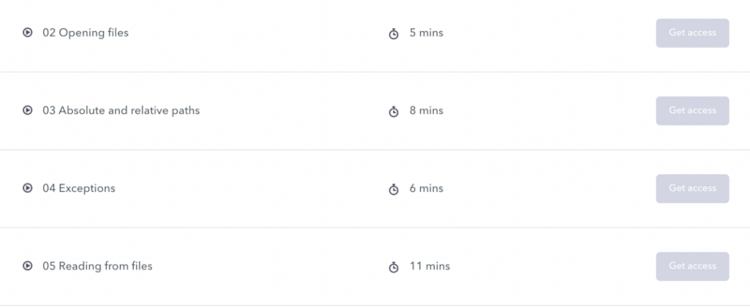
Reuven found that doing this was much better for his students and ultimately helped his business grow.
This approach of creating shorter pieces of content for students is known as microlearning. It’s highly effective as it improves engagement by 50%.
Beyond keeping your videos short, there’s also plenty of other things you could do to keep your content captivating. If you want some ideas to make your videos engaging, watch this short video.
For instance, you could try these techniques:
-
Use slides or graphics to support what you’re saying, such as a graph.
-
Film B-roll footage — it’s a cutaway that demonstrates what you’re talking about. E.g., carving a chair or editing an image in Photoshop.
But if your students are stalling at a particular point in the course, video length and content might not be the culprit. Instead, it could be your choice of media, and this is where complementary material is a game-changer.
Supplement your videos with other media
We all love video, but sometimes it’s not the best way to explain a particular step. For example, seeing essentials written out as a checklist can be easier than searching through a video for the information.
Crystal Hollman’s The Flatlay Method course mixes media to keep her students interested. She includes quizzes, homework, and a breakdown of each shoot in images and text.
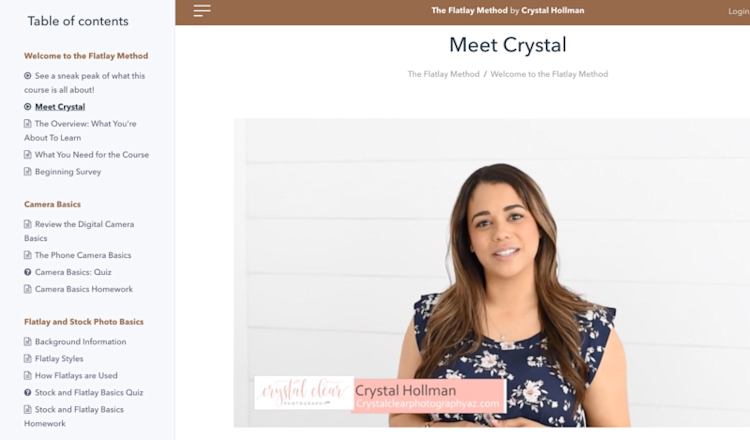
Crystal’s students clearly appreciate her mixed media material, as this sample of testimonials proves.
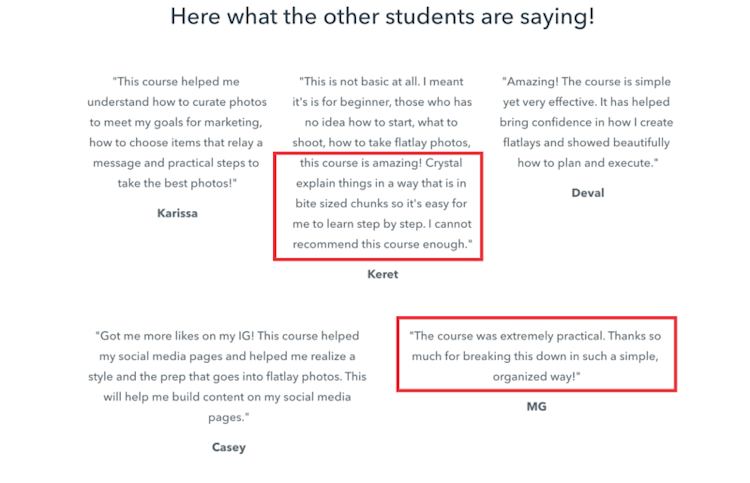
Her approach made it easier for her students to understand how to replicate her assignments and achieve their marketing goals.
Likewise, Nicole Saidy’s Become a UX/UI Designer uses a mixture of resources.
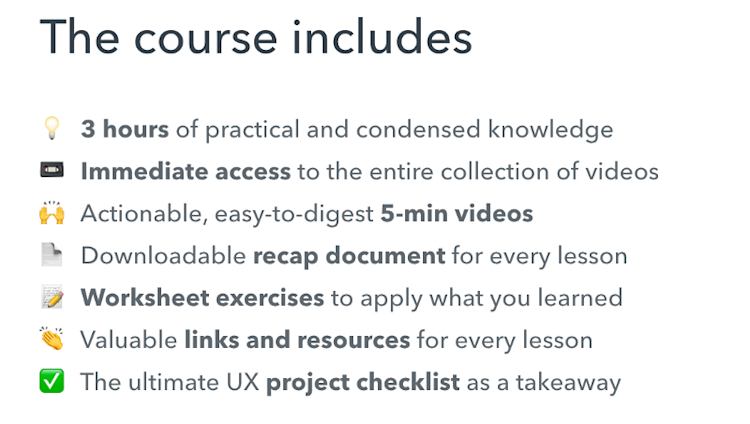
Her worksheets, checklists, and other resources make her course look like an excellent value. It emphasizes how practical and actionable each item is so that the students feel like it will positively impact their career prospects.
If you want to provide your students with downloadable documents and checklists, here are some time-saving tips.
Use tools like Canva to create worksheets and ebooks. For example, you can use templates like this one to build a simple worksheet.
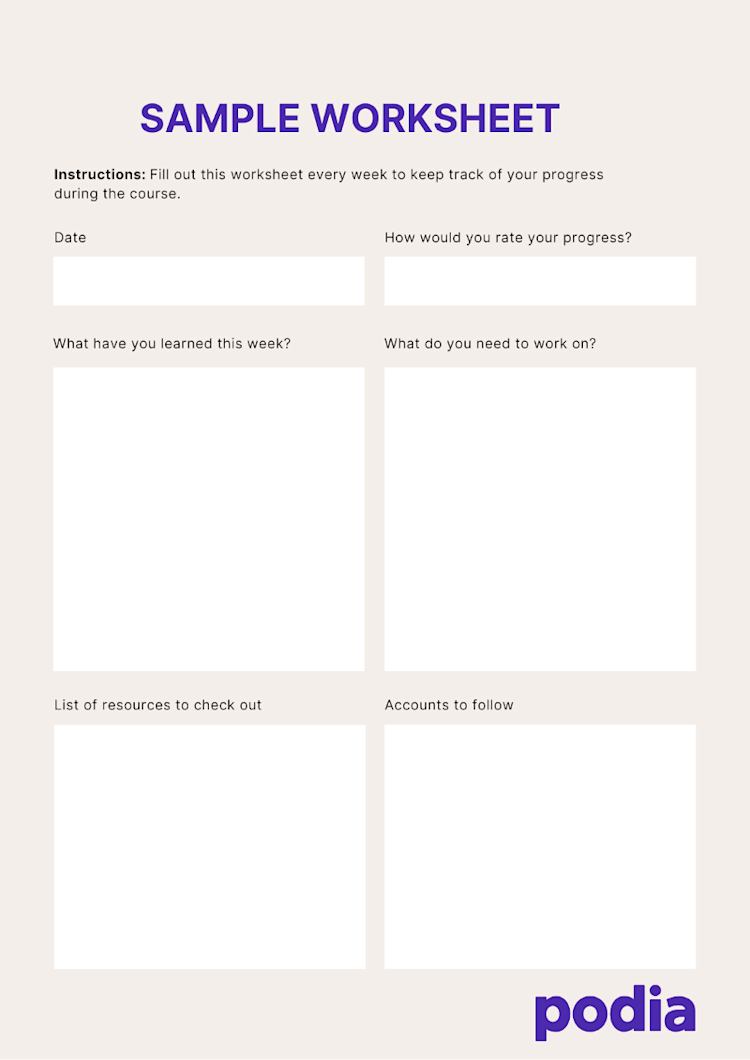
Here’s a list of other digital products you could create in less than 90 minutes. They include ebooks, templates, and infographics, all of which could help your students apply your teachings.
In short, identify what could be preventing your students from completing your course. Whether it’s your video length or your choice of resources, you can optimize your course for success.
But no matter how well designed your course is, sometimes you need to go the extra mile to keep your students engaged. That’s what our next strategy is all about.
Engage students during the course
If you want more engaged students, don’t let your course run on autopilot.
A shocking number of students never finish their online courses.
To help your students beat the odds, use one of these two tactics. They will keep your students motivated to finish.
We begin with an automated approach that has a significant impact on course completion.
Tactic 1: Create an email drip campaign
A powerful way to keep your students motivated is to accompany their learning with a series of emails. This will remind them of the course’s existence and encourage them to return to it regularly.
Onboarding emails are incredibly popular with students. They lead to higher retention rates and have the second-highest open and click rates.
Bryan Zavestoski employs this method with his free Meaningful Motion UI course. Every two days, a new email goes out to his students to supplement their progress.
For example, here’s the start of an email that arrives a few days after you’ve enrolled.

The tone is encouraging and gives you a sense of where you should be at this point in the course. So if you haven’t yet started, you know you should hurry to get the most value out of the course.
Bryan also shares in each of these emails contextual information and supplementary material for the most motivated students.

In his final email of the drip campaign, Bryan acknowledges that not everyone will have completed the course. But he still gives his students opportunities for engagement by hinting at a special invitation.
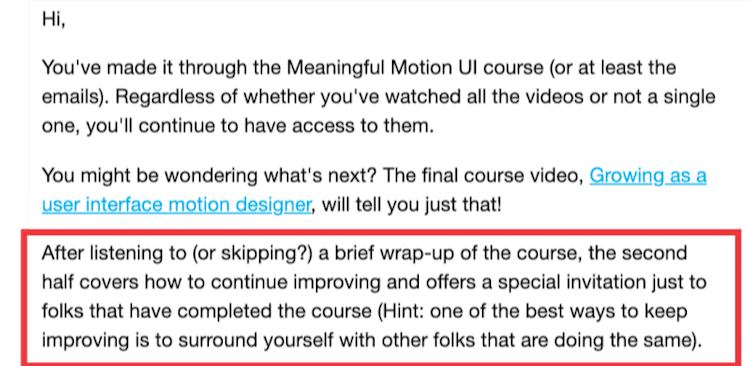
The gist of his email is: you can’t get the invite and improve if you don’t complete the course. That’s a powerful incentive to finish.
You could build a drip campaign in Podia to keep your students as engaged as Bryan’s students are. To do this, head to your dashboard and select “Create” and “New campaign”.

Add your campaign details, such as course number and your trigger, e.g., someone enrolling in your course.
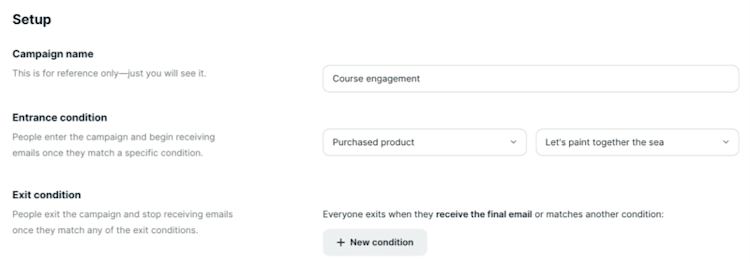
Next, you can create each email, one by one, including when they’ll be sent. So, for example, you could send emails every two days or every week.
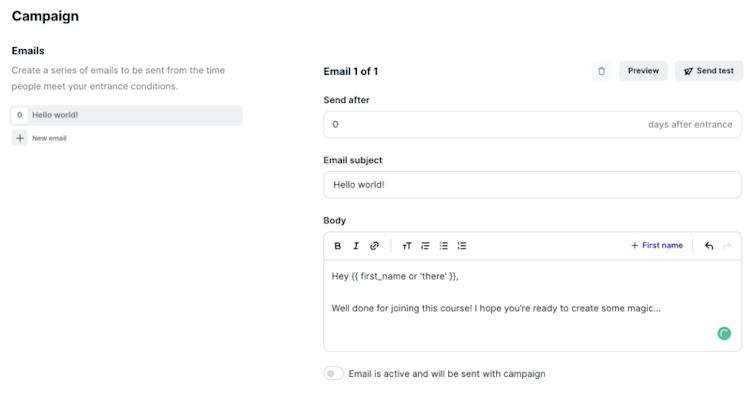
Once you’re happy with your sequence, make each email go live by turning on the “Email is active” button and then pressing “Start campaign”.

Your campaign will then be ready to go next time a new student enrolls.
The good news is that once you’ve built this drip campaign, it’ll run automatically without requiring further work on your part.
An email campaign can keep your students engaged, but so can your course material. Here’s how to integrate live elements to maximum effect.
Tactic 2: Use a mixture of live and recorded elements
The advantage of online courses is that students can learn at their own pace from anywhere, but this can also be demotivating.
The solution is to include live elements in your online course. As well as adding value to your course, this will give your students a sense of ownership and accountability for their own learning.
Susan O’Connor’s video game writing masterclass, The Narrative Department, takes place across six weeks. It combines pre-recorded lectures and live sessions.

If you’re going to add live elements to a course like Susan, it’s a good idea to schedule your course over a specific period. This makes it more manageable for you and also shows the students what time commitment is expected.
Scheduling courses like this makes them more appealing too, as they will appear to be exclusive and special. Case in point, to sign up for Susan’s masterclass, you have to join a waitlist.
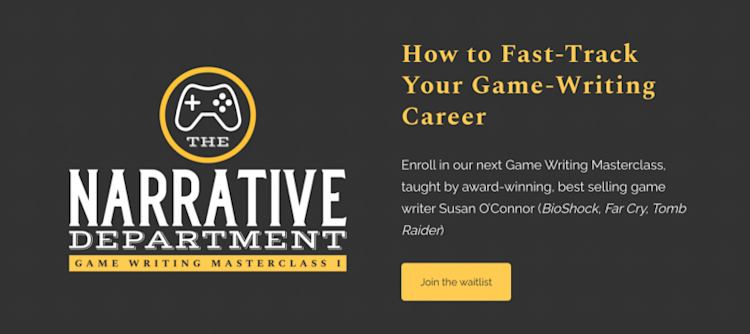
But the live elements have to feel necessary and not just an after-thought.
In the case of this masterclass, they include weekly live writing workshops and “Ask Me Anything” sessions. Having this exclusive access and feedback from a best-selling video game writer is priceless.
And, crucially, Susan’s approach also makes her students feel part of a community. This is important because community belonging is fundamental to our ability to learn.
One of Susan’s many satisfied students, Ian McNicol, agrees. In a testimonial video, he explains that the masterclass’s community was essential to his development as a narrative designer.

So, if you want to create a popular and successful course, mix live and recorded elements. You’ll be far more likely to see your students complete it.
Takeaway:
There are two essential ways to keep your students engaged as they learn. Guide them with an email drip campaign, or add live elements to your course.
These strategies will make your students feel part of a journey they want to see through to its destination.
Build an online course your students want to complete
In an ideal world, all your students will automatically complete your online course. But the reality is that everyone needs a nudge in the right direction sometimes.
Life gets busy, and there are hundreds of other distractions competing for your students’ attention.
Try these options to keep your students motivated to the end:
-
Create a course certificate to gamify the learning process and encourage your students to complete your course.
-
Identify any obstacles in your syllabus that could prevent your students from finishing. This could include video length.
-
Diversify your course content with downloadable and interactive resources.
-
Use tactics like an email drip campaign or live sessions to motivate your students over a set period of time.
Follow these strategies, and you’ll nurture highly motivated students who can’t wait to complete your course. You can create your course and other digital products with Podia. Try Podia free for 30 days.

